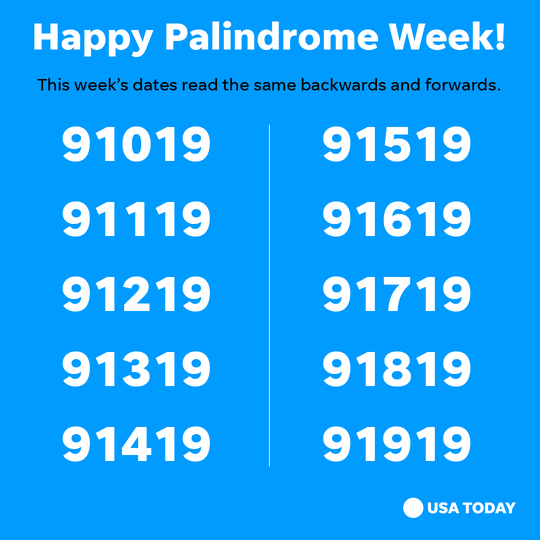DO the math, DON'T overpay. We make high quality, low-cost math resources a reality.
Wednesday, September 25, 2019
Math Jokes to make you laugh (and groan!)
Everyone loves a good pun! They make people laugh, they make people smile, and if they're really good, they might even make people groan! With that in mind, we thought we'd give you a few math jokes to make the mathematician in your life smile! (Note: the mathematician in your life will probably also groan at a couple of these as well)
Why couldn't the number stay still?
It was a Roamin' Numeral!
Why shouldn't you talk to zero?
It's pointless!
But why shouldn't you talk to pi?
It will just go on forever!
If you ever need help with something, don't ask an obtuse triangle.
It will never be right!
We know 6 was afraid of 7 because 7 8 9, but why did 7 eat 9?
You're supposed to eat 3 squared meals a day!
How do mathematicians travel short distances?
They take a Rhom-bus!
How do mathematicians travel long distances?
They take an x-y plane!
Why are math lectures so long?
The teachers like going on tangents!
How do you stay warm in a cold room?
Stand in the corner - they're always 90 degrees!
Did you see the math professors with the graph paper?
They must be plotting something!
Did you hear about the retired calculus teacher?
He's doing alright - just having some trouble dealing with the aftermath.
Infinitely many mathematicians walk into a bar.
The first mathematician says "I'd like one beer, please."
The second mathematician says "I'd like half a beer, please."
The third mathematician says "I'd like a quarter of a beer, please."
The bartender pours two drinks.
"Come on," he says, "you guys should know your limit!"
One known and one unknown polynomial [Algebra]
Check out this Problem of the Week.
Be sure to let us know how you solved it in the comments below or on social media!
Solution below.
Be sure to let us know how you solved it in the comments below or on social media!
Solution below.
Thursday, September 19, 2019
Palindrome Week ends today! What's next?

Today is September 19, 2019. If this is written out in m-dd-yy form (the American way; apologies to all non-Americans), it reads 9/19/19. This number, 91919, is a palindrome - a number that's the same forwards and backwards! The last nine days have all been like this - 91019, 91119, 91219, etc. This has been referred to as a Palindrome Week. Although it's 10 days, each day of the 'week' is a palindrome, which is where the name comes from. Tomorrow, unfortunately, will be September 20, which won't be a palindrome. That will thus mark the end of 2019's palindrome week. If you're feeling sad at the end of this 'week' of palindromic celebration, here are a few dates you should write down in your calendar:
January 20, 2021
This is the next palindromic day on the American calendar, as its written 12021. This will also be the start of the next palindromic week, as the days will be 12121, 12221, all the way up to 12921. For the rest of the 20's, there will be a palindrome week 13 months after the previous one. The next palindrome week will start on February 20, 2022, then March 20, 2023, and so on.
December 1, 2021
The palindromic weeks discussed have been written in m-dd-yy format, but December 1-9 is a palindromic week if written in mm-d-yy format. The palindromes are 12121, 12221, etc., which are the same palindromes as January 20-29, 2021. If written in this format, it will be December's only palindromic week of the century.
September 20, 2029
This will be the start of the last Palindrome Week of the century. Palindrome weeks are 5 digit numbers, so the first number of the year must be the same as the first number of the day. When the 30's begin, the day of the must also be in the 30's. However, a month has at most only 2 days in the 30's. Thus, this will be the last palindromic week of the 21st century.
September 30, 2039
This will be the last palindromic day written in m-dd-yy format of the 21st century. The next day that can be written as a palindrome in m-dd-yy format is January 01, 2101. Don't forget to mark your calendars!
February 2, 2020
This isn't a palindrome in m-dd-yy format, but is one of only 12 days this century that are palindromes when written in mm-dd-yy format! Three of them have already happened (10/02/2001, 01/02/2010, 11/02/2011), but there are 8 after February 2, 2020. After February 2, 2020 is December 2, 2021. Then, starting on March 2, 2030, there will be a palindromic day every 10 years and one month after the last one. So after March 2, 2030, the next palindromic day will be April 2, 2040, then May 2, 2050, up until September 2, 2090!
Tuesday, September 17, 2019
Problem of the Week: Solving for a polynomial and its derivative [Calculus]
Check out this Problem of the Week.
Be sure to let us know how you solved it in the comments below or on social media!
Solution below.
Be sure to let us know how you solved it in the comments below or on social media!
Solution below.
Thursday, September 12, 2019
Math in Architecture!
Basic math is required for all architecture; a building where the amount of weight it can hold is unknown wouldn't exactly be one that a lot of people would want to step in! However, oftentimes architects go above and beyond when designing building, and rely on math to make creations that are structurally sound and aesthetically beautiful. Here are a few examples of the application of math in architecture!
 Solar panels are becoming more and more popular, and this pavillion in Barcelona, designed by a team at the Institute for Advanced Architecture of Catalonia (IAAC) led by Rodrigo Rubio, used math to take full advantage of solar power. Made of wooden parts produced with a machine similar to a 3D printer, this building's design was aided by a computer program to optimize the amount of solar power it can produce!
Solar panels are becoming more and more popular, and this pavillion in Barcelona, designed by a team at the Institute for Advanced Architecture of Catalonia (IAAC) led by Rodrigo Rubio, used math to take full advantage of solar power. Made of wooden parts produced with a machine similar to a 3D printer, this building's design was aided by a computer program to optimize the amount of solar power it can produce!

This London skyscraper looks a lot like a pickle (thus the name), and there is a mathematical reason behind its unusual shape! Standing at 591 feet and designed by the firm Foster and Partners, parametric modeling was used to minimize whirlwinds around the tower, and the pickle design maximizes ventilation. Its distinct mathematical design makes it stand out!
One of the world's most famous buildings, this mausoleum built under Shah Jahan relied on mathematics for practical purposes that contributed to its beauty. The tall minarets outside the central building are designed such that they stand upright, but will fall outward if an earthquake strikes, protecting the main structure. Additionally, the building is designed symmetrically, both vertically and horizontally (with the reflecting pool), and the golden ratio can be found looking at the size of the arches and walls on the outside of the building!
This chapel at the US Air Force Academy is a feat of architecture, designed by Walter Nesch with geometry in mind. There are 17 spires on the chapel, which has a tetrahedral frame. Built in 1960 for over $3 million dollars, this breathtaking structure is 175 feet high!
Endesa Pavilion Solar House 2.0

The Gherkin
This London skyscraper looks a lot like a pickle (thus the name), and there is a mathematical reason behind its unusual shape! Standing at 591 feet and designed by the firm Foster and Partners, parametric modeling was used to minimize whirlwinds around the tower, and the pickle design maximizes ventilation. Its distinct mathematical design makes it stand out!
Taj Mahal
Cadet Chapel
Leaning Tower of Pisa
While mathematics certainly contributed to the design of the famous tower, engineers have used mathematics to prevent it from leaning too much! Several years ago, it seemed as if the tower was going to finally tip too much, so a team was brought in to restore it. The initial solution - fortifying the base - failed, as it only made the base heavier. Eventually, a solution was found - they removed soil from the side that was leaning and added cables to stop the lean. Currently the tower leans at an angle of 4 degrees - just a little more than a degree less than the 'critical point' at which it will fall!
Tuesday, September 10, 2019
Problem of the Week: Solving for a Positive Real [Algebra]
Check out this Problem of the Week.
Be sure to let us know how you solved it in the comments below or on social media!
Solution below.
Be sure to let us know how you solved it in the comments below or on social media!
Solution below.
Thursday, September 5, 2019
NEW: Statistics Behind the NFL!
The NFL Regular Season officially kicks off tonight! You're familiar with the usual statistics (completion percentage, sacks, etc.) but what about more advanced statistics? How can we compare two players? How does one factor in downs and situational performance when evaluating teams and players?
This video series takes a look at the statistics that seek to answer these questions and how they work!
(Sources for statistics are Pro Football Reference and Football Outsiders)
This video series takes a look at the statistics that seek to answer these questions and how they work!
(Sources for statistics are Pro Football Reference and Football Outsiders)
Wednesday, September 4, 2019
Problem of the Week: 0 to 100 in four steps! [Combinatorics]
Subscribe to:
Comments (Atom)





